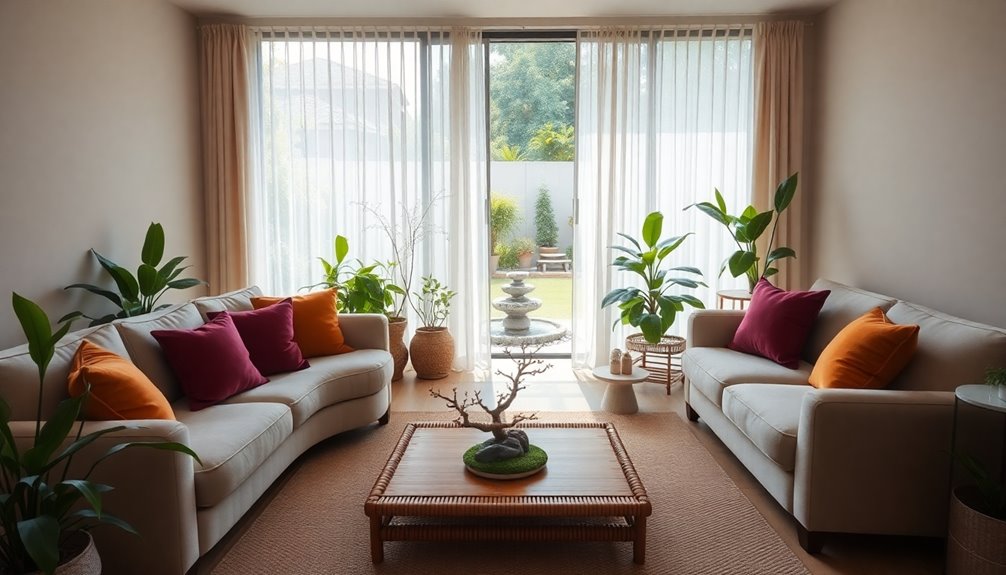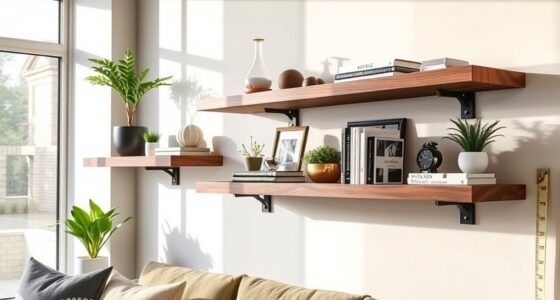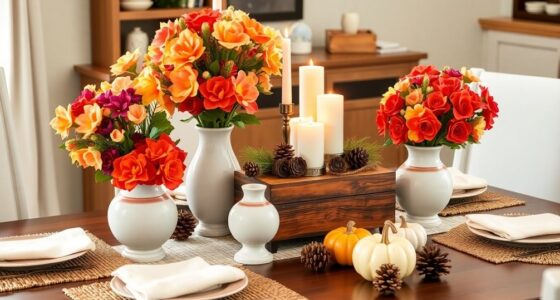To harmonize your spaces with Feng Shui design, start by understanding the flow of Qi, or energy, in your home. Decluttering is essential to keep this energy unobstructed. Utilize the Bagua Map to identify areas of your life that need balance. Incorporate the five elements—Wood, Fire, Earth, Metal, and Water—by using plants, colors, and natural materials to enhance your environment. Furniture placement in commanding positions can promote security and flow. By applying these principles, you'll invite positive energy and create a serene atmosphere. Discover more practical tips for transforming your living space into a balanced haven.
Key Takeaways
- Utilize the Bagua Map to identify life areas and enhance energy flow in your home.
- Create a commanding position for key furniture to promote security and stability.
- Incorporate natural elements, like plants and water features, to invite abundance and tranquility.
- Regularly declutter your space to maintain open energy flow and reduce stress.
- Balance the five elements—wood, fire, earth, metal, and water—for a harmonious living environment.
Understanding Feng Shui Principles
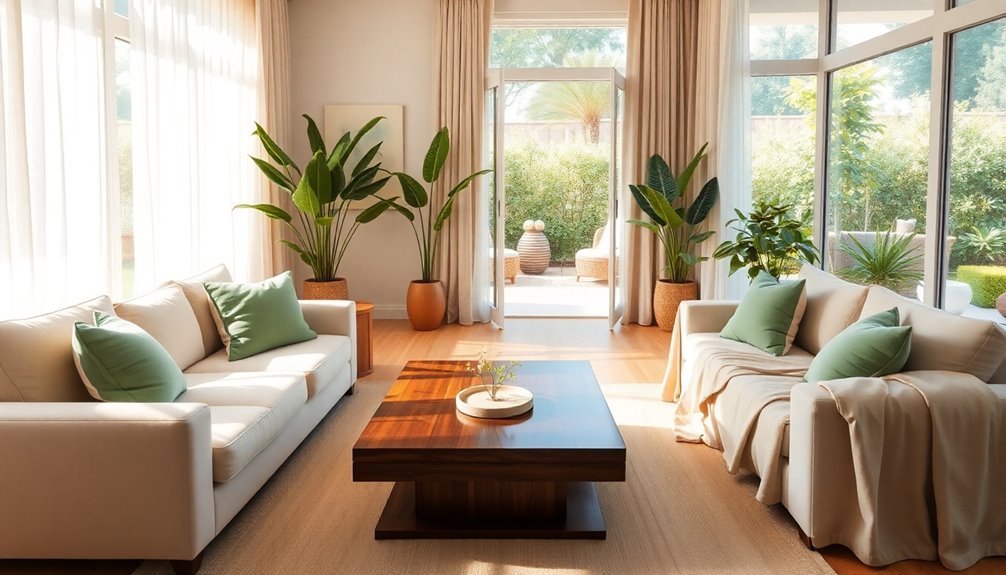
Understanding Feng Shui principles begins with recognizing the significance of Qi, or energy flow, in your living space.
To create a harmonious environment, guarantee that energy flows unobstructed by decluttering and strategically arranging your furniture and decor.
The Bagua Map is an essential tool that helps you analyze energy flow by dividing your space into eight life areas, guiding you on ideal placements.
Balancing Yin and Yang energies is also imperative for tranquility and harmony.
By applying these principles of Feng Shui, you can promote positive energy and support balanced living.
The Role of the Five Elements
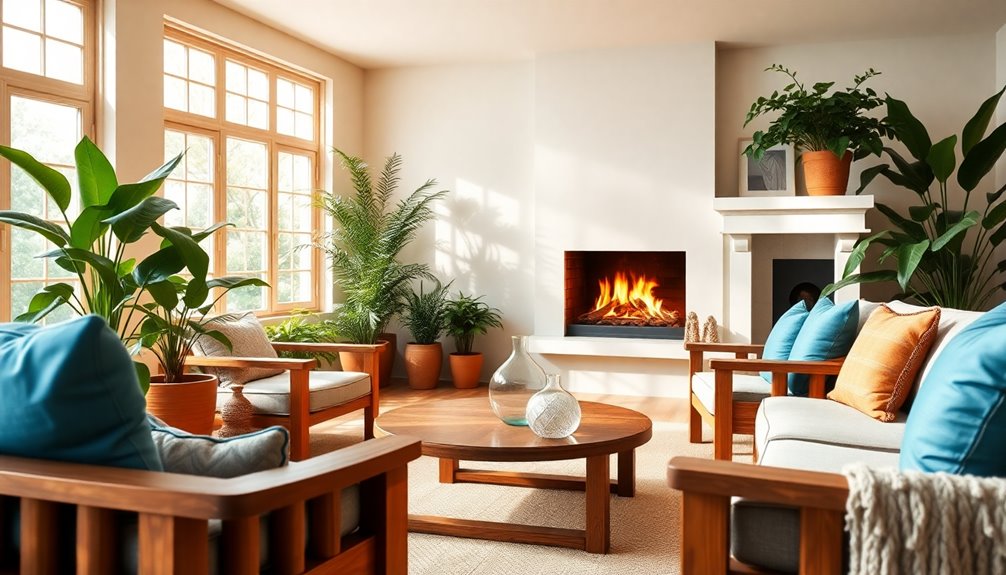
The Five Elements of Feng Shui—Wood, Fire, Earth, Metal, and Water—play an essential role in creating balance and harmony within your living space.
Each element contributes unique qualities to enhance energy flow and promote balance:
- Wood: Represents growth and liveliness, perfect for inspiring creativity and nurturing family bonds.
- Fire: Embodies passion and transformation, boosting motivation and energy with vibrant reds.
- Earth: Signifies stability and nourishment, fostering a grounding atmosphere through warm tones. Incorporating spiritual principles into your design can further enhance the unity of these elements.
Enhancing Space Through Design
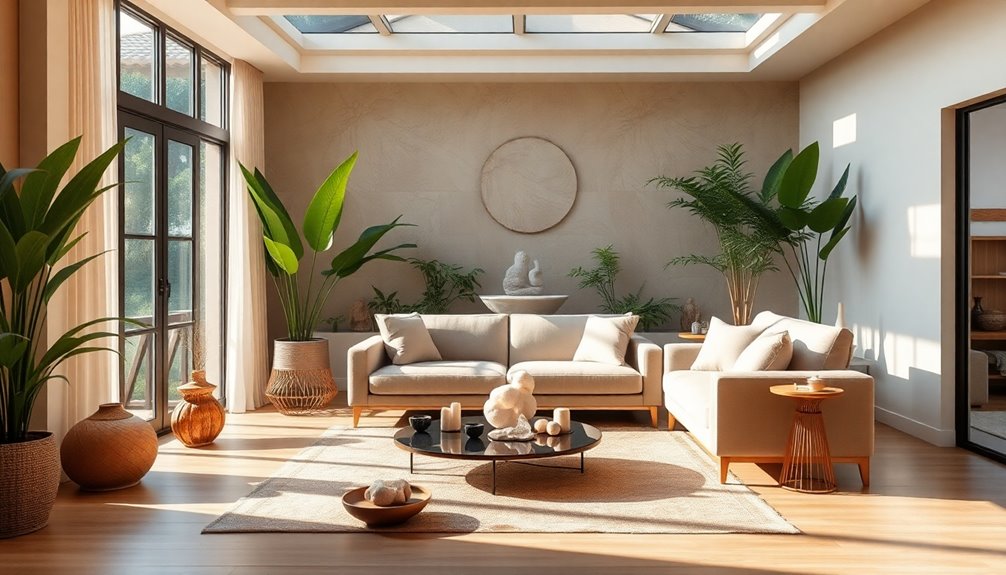
To create a harmonious living space, incorporating design elements that reflect the principles of Feng Shui can greatly enhance your environment.
Start by focusing on proper placement of furniture to promote positive energy flow. Position key pieces in a commanding position, fostering a sense of security and stability.
Utilize natural light and introduce plants to invigorate your space, enhancing liveliness and improving air quality.
Decluttering is essential; it maintains an unobstructed energy flow, creating a calmer atmosphere.
Additionally, consider circular design patterns in your furniture arrangement, encouraging smooth energy circulation. These patterns can create a harmonious environment that promotes relaxation and connectivity within your space. Incorporating elements such as rounded tables or curved sofas can enhance this flow, making the room feel more inviting. To complement this aesthetic, explore nautical decor ideas for bedrooms, as they can infuse a sense of calm and tranquility reminiscent of serene coastal settings.
Practical Feng Shui Applications
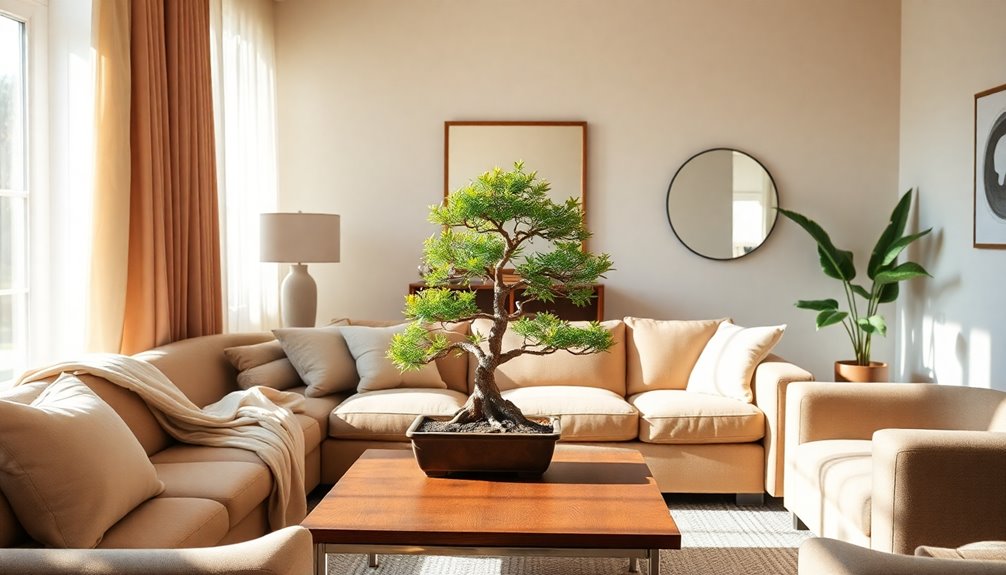
Building on the harmonious design principles previously discussed, practical Feng Shui applications can further elevate your living space. To optimize the energy flow and invite positive energy, consider these key principles:
- Declutter Regularly: This keeps your space open, allowing Qi to circulate freely.
- Furniture Arrangement: Position key pieces, like your bed or desk, in a commanding position facing the door for security.
- Incorporate Natural Elements: Use plants and water features to enhance liveliness and symbolize abundance.
Additionally, strategically placing mirrors can redirect energy, making your space feel larger and more inviting.
Benefits of Feng Shui in Homes
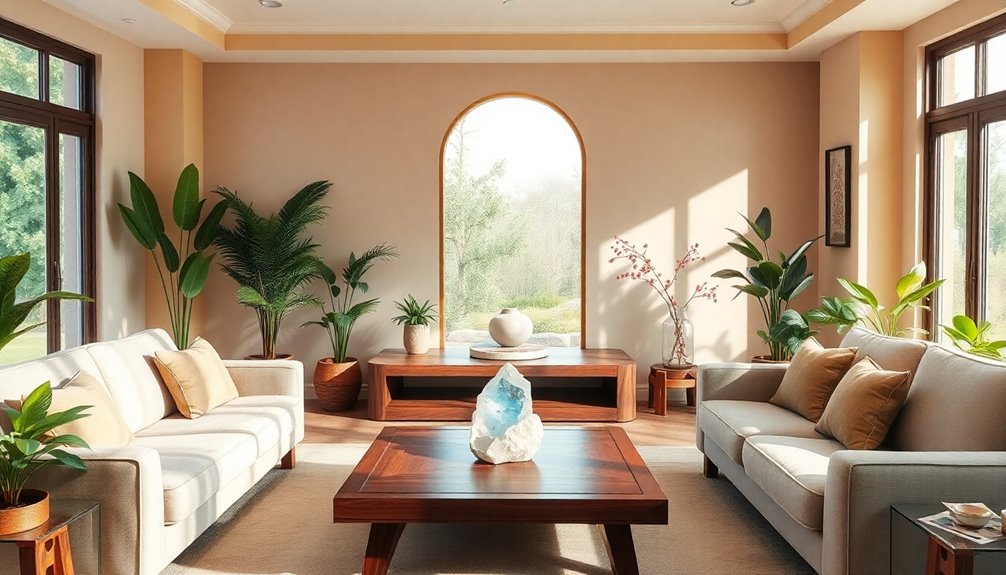
While many may associate Feng Shui solely with aesthetics, its benefits extend far beyond visual appeal, offering profound impacts on your overall well-being.
By applying Feng Shui principles, you can create an environment that promotes positive energy and allows it to flow freely throughout your space. This harmonious design reduces stress and anxiety, fostering relaxation and emotional balance.
Mindful arrangements can enhance mental clarity and focus, contributing to a serene atmosphere that nurtures better relationships and social interactions.
Integrating natural elements and light not only beautifies your home but also supports holistic living, leading to improved health outcomes.
Ultimately, aligning energies in your home can attract prosperity and abundance, inviting wealth energy into your life. Additionally, utilizing efficient systems like heat pumps can further enhance your home's comfort while promoting sustainability.
Frequently Asked Questions
How to Harmonize Your Home?
To harmonize your home, start by decluttering to remove any energy blockages, allowing for a free flow of Qi.
Use the Bagua Map to identify areas connected to different life aspects and arrange your space accordingly.
Position key furniture in commanding positions, facing the entrance for security.
Incorporate the Five Elements through decor and colors, and enhance natural light with mirrors and plants to foster liveliness and a balanced environment.
How to Arrange Your House According to Feng Shui?
To arrange your house according to feng shui, start by positioning key furniture, like your bed and desk, diagonally across from the door for security.
Keep pathways clear to promote a smooth flow of energy.
Use pairs of decor items to create balance and consult the Bagua Map to enhance specific life areas with the five elements.
Finally, let natural light in and incorporate plants to connect with nature and boost your well-being.
What Is the Rule of 3 in Feng Shui?
The Rule of 3 in Feng Shui emphasizes grouping items in threes to create balance and harmony in your space.
This principle applies to decor, furniture, and plants, as odd numbers generate dynamic energy. When you arrange items in threes, pay attention to their placement and alignment to resonate with the energy of the area.
What Is Bad Feng Shui for a House?
Imagine walking into a home where the front door's blocked by overgrown bushes. This bad feng shui prevents positive energy from entering, affecting your opportunities and wealth.
Cluttered spaces disrupt the flow of Qi, leaving you feeling anxious. If your bed's in line with the door, you might struggle to relax, while mirrors facing the bed can bounce negative energy around.
Guarantee natural light and ventilation to invite uplifting energy into your space.
Conclusion
By embracing feng shui design, you can transform your home into a harmonious sanctuary that nurtures your well-being. Did you know that studies show homes designed with feng shui principles can improve mental clarity and reduce stress by up to 30%? It's clear that a balanced environment contributes to a balanced mind. So, take the time to apply these principles and enjoy the positive energy that flows throughout your space, making your home a true reflection of harmony.
